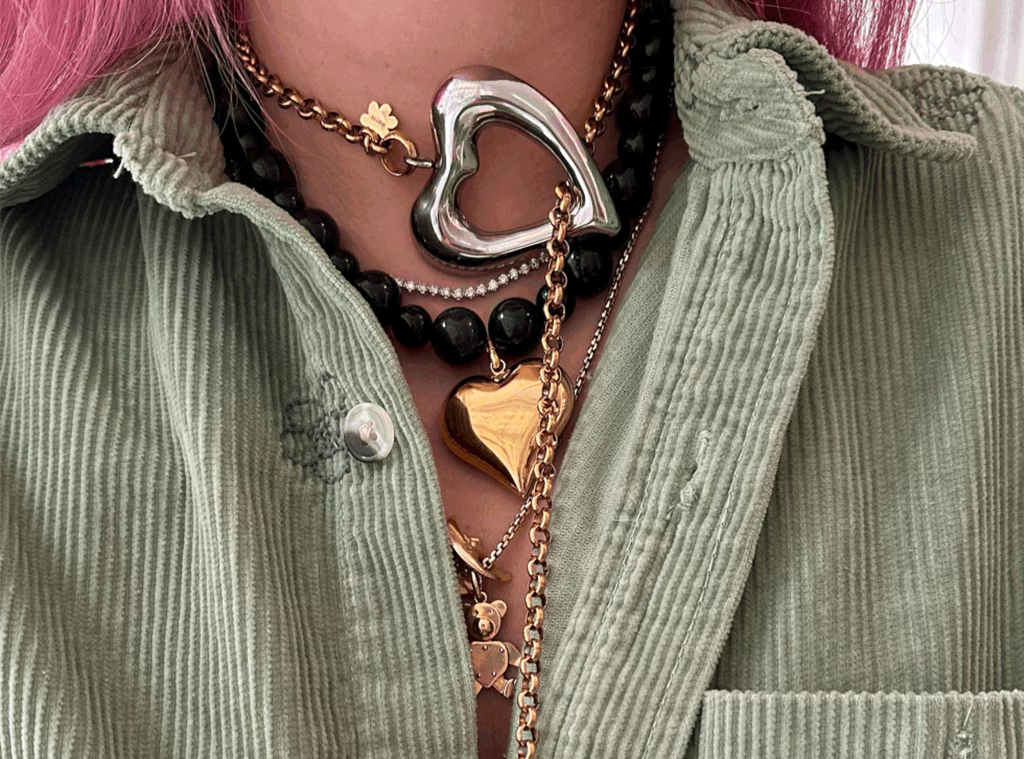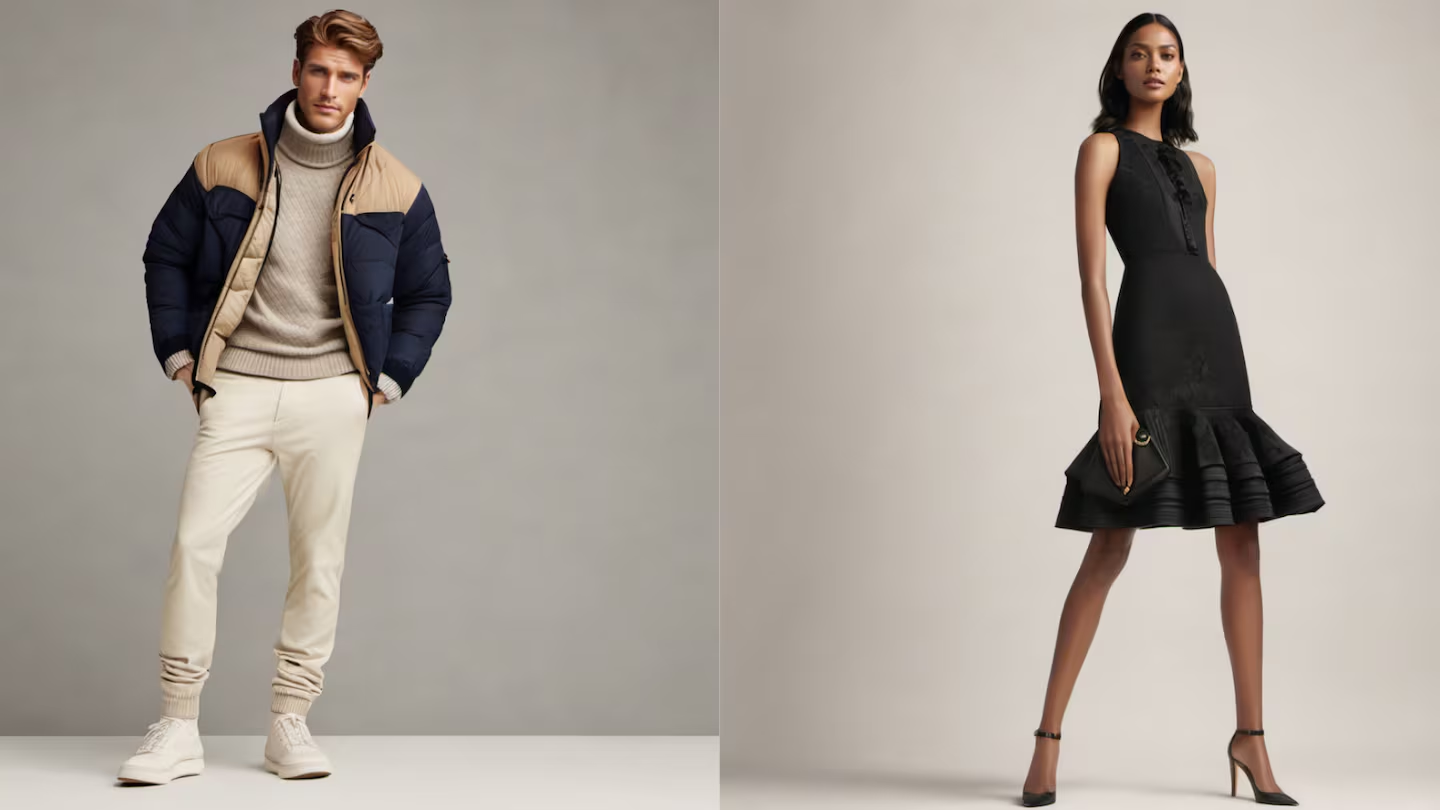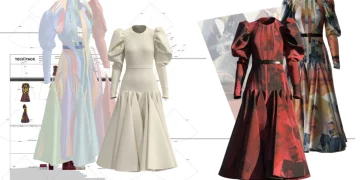Introduction
Digital fashion—an emerging phenomenon blending technology, creativity, and sustainability—has recently sparked intense discussions in the fashion industry. With the rise of virtual worlds, artificial intelligence, and 3D modeling, fashion is no longer confined to the tangible world. From virtual garments for avatars to high-end digital couture for the Metaverse, digital fashion is quickly transforming the traditional industry. But is it truly the next big thing, or is it just a passing trend? Let’s dive into the world of digital fashion and explore why it could revolutionize the industry as we know it.
1. What is Digital Fashion?
At its core, digital fashion is a blend of technology and design aimed at creating clothing and accessories that exist only in a digital or virtual format. These garments are created using advanced 3D modeling and digital design tools, allowing designers to create pieces that are far beyond the constraints of physical production. Unlike traditional fashion, which requires manufacturing, fabric sourcing, and physical storage, digital fashion exists in cyberspace, often worn by avatars or used in digital media like video games or virtual experiences.
Key Features of Digital Fashion:
- Virtual Clothing for Avatars: In virtual worlds such as the Metaverse or games like Fortnite, users can purchase and wear digital clothes that exist only in the game or virtual environment.
- Fashion for Augmented Reality (AR): With AR technology, users can “try on” clothes virtually, via apps or social media filters.
- Fashion in the NFT Space: Digital fashion pieces can also be sold as Non-Fungible Tokens (NFTs), making them unique, tradable assets within the digital space.
- Sustainable Practices: Digital fashion has the potential to address sustainability issues in the industry by reducing waste, carbon footprints, and the need for physical production.
2. The Role of Technology in Digital Fashion
To understand why digital fashion is taking off, it’s crucial to look at the technologies enabling this shift.
2.1 3D Design and Virtual Fitting
Digital fashion is largely driven by 3D design software, which allows fashion designers to create digital garments with incredible precision and detail. Tools like CLO 3D and Marvelous Designer let designers simulate fabrics, textures, and how garments will look on virtual models or avatars. This eliminates the need for physical samples and allows for much faster iteration of designs.

Moreover, the rise of virtual fitting rooms and AR-powered platforms allows consumers to “try on” digital clothes in real time. Brands such as Zara and H&M are incorporating AR in their apps to enable users to visualize clothing without having to step into a store.
2.2 The Metaverse and Virtual Real Estate
The Metaverse is a collection of interconnected virtual worlds where people can interact, socialize, play games, or engage in commerce. Within this space, digital fashion plays a massive role. High-end brands like Gucci, Balenciaga, and Prada have already started creating virtual fashion collections to be worn by avatars in the Metaverse.
2.3 Blockchain and NFTs
Blockchain technology is revolutionizing digital fashion by allowing designers to authenticate their work and track its ownership through NFTs. Digital fashion NFTs enable designers to create exclusive collections that can be traded, creating new economic models for fashion. These assets are secure, immutable, and unique, which makes them attractive to both consumers and creators.
3. Digital Fashion and the Future of Consumerism
3.1 How Digital Fashion Reshapes the Concept of Ownership
One of the most radical shifts that digital fashion introduces is a redefinition of ownership. Traditional fashion is centered around physical possession—if you own a piece of clothing, it’s yours to keep, sell, or donate. Digital fashion, however, challenges this by offering items that only exist in a virtual space. The concept of “wearing” something without owning a physical object may seem strange to some, but it is gaining traction, particularly among younger generations who are accustomed to the digital world.
3.2 The Role of Virtual Influencers and Social Media
Social media influencers have traditionally influenced consumer behavior in fashion, but virtual influencers—who are entirely computer-generated—are now making waves. These avatars are “dressed” in digital fashion, promoting products and lifestyles just like real human influencers. Brands like Prada, Balenciaga, and Dior have already teamed up with virtual influencers to market their digital collections.
3.3 Sustainability and Waste Reduction
The fashion industry is one of the largest polluters in the world, contributing to textile waste, water contamination, and unsustainable production practices. Digital fashion offers a potential solution by drastically reducing waste. Since there is no physical product involved, digital garments leave no carbon footprint. Furthermore, digital clothing allows for endless customization and wearability, giving consumers the opportunity to refresh their wardrobe without ever creating a new garment.
4. Why Digital Fashion is More than a Trend
4.1 Consumer Behavior Is Shifting
The younger, digitally native generation is increasingly prioritizing experiences over material possessions. This shift is accelerating the acceptance of virtual fashion. Many consumers are more than willing to purchase digital garments, as they spend significant time in virtual environments like video games or social media platforms. Fashion brands are taking notice and are tapping into this new consumer segment.
4.2 Collaborations Between Fashion and Technology
The convergence of fashion and technology is creating opportunities for new business models. Established designers and digital fashion startups are collaborating with tech giants like Microsoft, NVIDIA, and Unity to push the boundaries of digital fashion. These partnerships combine creativity with cutting-edge technological expertise to create compelling virtual clothing experiences.
4.3 The Environmental Imperative
The fashion industry’s environmental impact cannot be ignored. With climate change becoming an increasingly urgent global issue, digital fashion offers a solution that aligns with consumers’ growing desire for sustainable, eco-friendly alternatives. Digital fashion doesn’t require raw materials like cotton, wool, or leather, and it avoids waste from overproduction. It also circumvents the carbon footprint associated with transportation and the energy usage of physical stores.
5. Challenges to Overcome

While digital fashion offers numerous benefits, it also faces significant challenges.
5.1 Perception and Acceptance
Despite the increasing interest in digital fashion, there remains a lack of understanding about its value, especially among older generations. Many still struggle to grasp the concept of spending money on something that doesn’t exist physically. Education and exposure will be key in overcoming these barriers.
5.2 Technological Limitations
Although technology has made significant strides in digital fashion design, there are still limitations when it comes to rendering realistic textures and simulating how fabrics behave in a virtual space. As the technology improves, digital garments will become increasingly sophisticated, but we’re not there yet.
5.3 Market Saturation
As more designers and brands jump into the digital fashion space, there’s a risk of market saturation. The industry will need to find ways to differentiate unique pieces from low-quality digital garments. Consumers may also experience “virtual fatigue” if they’re bombarded with too many digital fashion offerings.
6. The Road Ahead for Digital Fashion
Despite the challenges, the future of digital fashion looks promising. As the Metaverse continues to grow, and technologies like AR, VR, and 5G continue to evolve, digital fashion will only become more integrated into our daily lives. Brands and consumers alike will increasingly recognize its value—not just as an accessory or novelty, but as a legitimate form of fashion in its own right.
6.1 Virtual Fashion Shows
Major fashion houses are already experimenting with digital runway shows. Rather than showcasing physical clothing, these shows feature digital designs that can be viewed from anywhere in the world. This opens up fashion shows to a global audience and enables designers to reach new markets without the constraints of physical space or resources.
6.2 Integration with Other Industries
The boundaries between fashion, technology, gaming, and entertainment are becoming increasingly blurred. Digital fashion can easily cross over into other industries, whether it’s in virtual concerts, gaming avatars, or interactive experiences. As industries converge, digital fashion could become an essential part of everyday virtual life.
7. Conclusion
In conclusion, digital fashion is far more than just a passing trend. It is the intersection of fashion, technology, and sustainability—three forces that will define the future of the industry. From its role in the Metaverse to its potential to reduce fashion’s environmental footprint, digital fashion is poised to be a major player in the evolving landscape of consumerism.
The path to mass acceptance may take time, but with an ever-growing appetite for innovation, coupled with the relentless pace of technological progress, digital fashion is definitely on the rise. As consumers and designers explore this new frontier, one thing is certain: the future of fashion will be digital.

















































